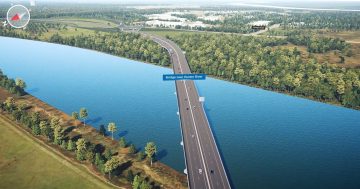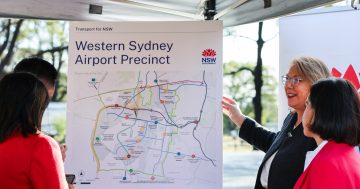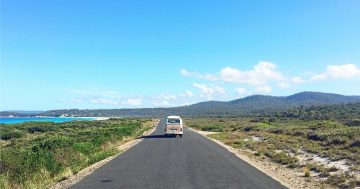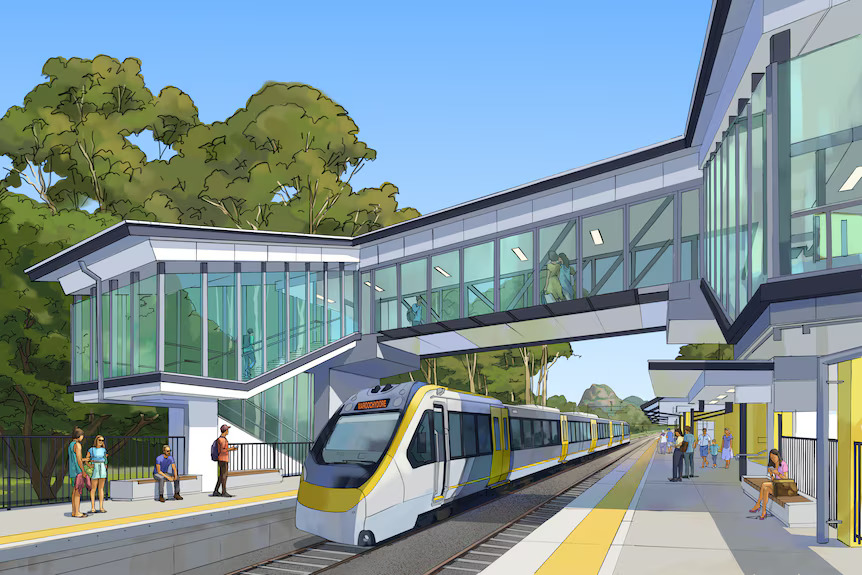
An artist’s impression of the Beerwah station upgrade. Photo: Dept. of Transport and Main Roads.
The Direct Sunshine Coast Rail Line project has been locked in thanks to an extra $1.15 billion in Commonwealth investment, boosting the region’s public transport in the lead up to the 2032 Brisbane Olympics.
A total of $2.75 billion of Federal Government funding will ensure delivery of the project, which involves laying 37.8 km of new dual track from Beerwah to Maroochydore.
The first stage entails building a 19-km dual track from Beerwah to Caloundra, which will make it the longest spur line in the south-east passenger network. It will also include the protection of the updated rail alignment from Birtinya and Maroochydore.
Federal Infrastructure Minister Catherine King said the Direct Sunshine Coast Rail Line would save commuters around 45 minutes driving time in peak hour from the new Sunshine Coast stations to Roma Street in Brisbane.
“We’re delivering the infrastructure – built by Australians – that improves safety, revitalises regions, and ensures Australia is well placed to compete in the new, net zero economy,” said Minister King.
In early 2022 the former Coalition government said it would match the Queensland Government’s $1.6 billion investment for its development, however its loss in the following election meant it would not be passed by parliament.
Although Labor kept its funding agreement with the state, it was later found in a business case to be insufficient for completing the whole project.
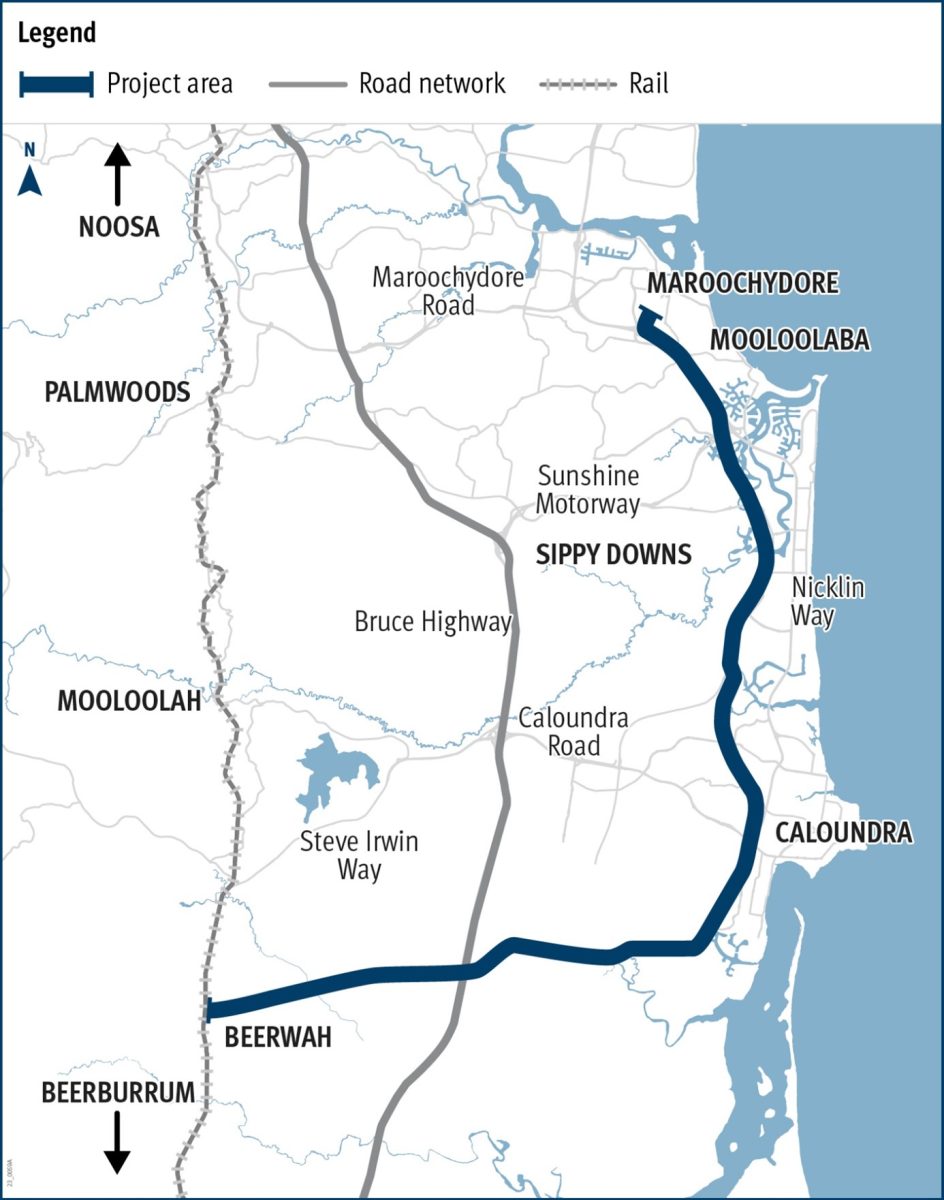
This map shows the Caboolture to Maroochydore Corridor Study corridor (protected in 2001). The department proposes to refine the corridor as part of the Direct Sunshine Coast Rail Line detailed business case. Photo: Dept. of Transport and Main Roads.
It was this business case that led to the decision for the project to be built in stages. Queensland Transport and Main Roads Minister Bart Mellish said if they got the support of the Commonwealth, this approach would ensure more than half of the rail line was built prior to the 2032 Olympics.
“With the number of trips on the Bruce Highway set to increase by 49 per cent by 2046, residents in the region need a direct, fast and reliable connection to the southeast,” Minister Mellish said. “Direct Sunshine Coast Rail will not only help ease congestion, but will also help unlock future housing development on the Sunshine Coast.
“Stage one alone involves building 19 km of track. Seven km of that track is elevated rail on viaducts, including 10 bridges, crossing roads, creeks and the Bruce Highway.
“Stage two is even more complex, involving construction of another 7.5 km of track between Caloundra and Birtinya, including a 1.2-km tunnel at Little Mountain.
Minister Mellish said 4 km of the latter stage was elevated rail on viaducts and included six bridges, due to the number of creek crossings and low-lying terrain. As a result, the State Government would require further advice from infrastructure construction companies on the approach, materials and timeframes to deliver this section of the line.
The Queensland Government estimates stage one will cost between $5 billion and $7 billion, which is realisable thanks to the Federal Government’s total state infrastructure investment of $21.7 billion.
Assistant Minister for Regional Development and Queensland Senator Anthony Chisholm said the Direct Sunshine Coast Rail Line wouldn’t just benefit locals, but also the millions of tourists who visited the coast each year.
“More and more people are choosing to call the Sunshine Coast home, so we’re investing in the infrastructure this area needs to keep up with the growing demand.”



